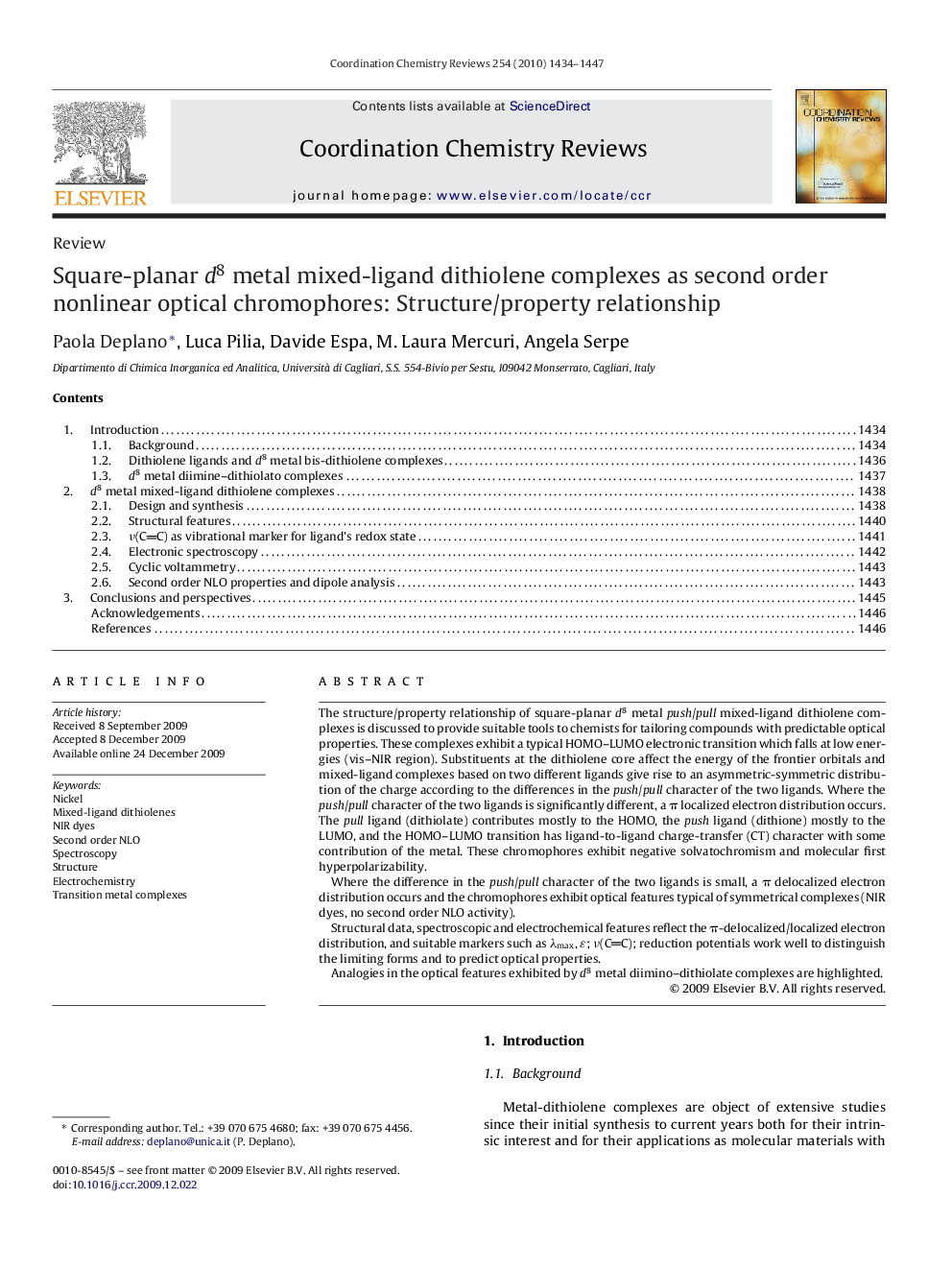| Article ID | Journal | Published Year | Pages | File Type |
|---|---|---|---|---|
| 1299285 | Coordination Chemistry Reviews | 2010 | 14 Pages |
The structure/property relationship of square-planar d8 metal push/pull mixed-ligand dithiolene complexes is discussed to provide suitable tools to chemists for tailoring compounds with predictable optical properties. These complexes exhibit a typical HOMO–LUMO electronic transition which falls at low energies (vis–NIR region). Substituents at the dithiolene core affect the energy of the frontier orbitals and mixed-ligand complexes based on two different ligands give rise to an asymmetric-symmetric distribution of the charge according to the differences in the push/pull character of the two ligands. Where the push/pull character of the two ligands is significantly different, a π localized electron distribution occurs. The pull ligand (dithiolate) contributes mostly to the HOMO, the push ligand (dithione) mostly to the LUMO, and the HOMO–LUMO transition has ligand-to-ligand charge-transfer (CT) character with some contribution of the metal. These chromophores exhibit negative solvatochromism and molecular first hyperpolarizability.Where the difference in the push/pull character of the two ligands is small, a π delocalized electron distribution occurs and the chromophores exhibit optical features typical of symmetrical complexes (NIR dyes, no second order NLO activity).Structural data, spectroscopic and electrochemical features reflect the π-delocalized/localized electron distribution, and suitable markers such as λmax, ɛ; ν(CC); reduction potentials work well to distinguish the limiting forms and to predict optical properties.Analogies in the optical features exhibited by d8 metal diimino–dithiolate complexes are highlighted.
